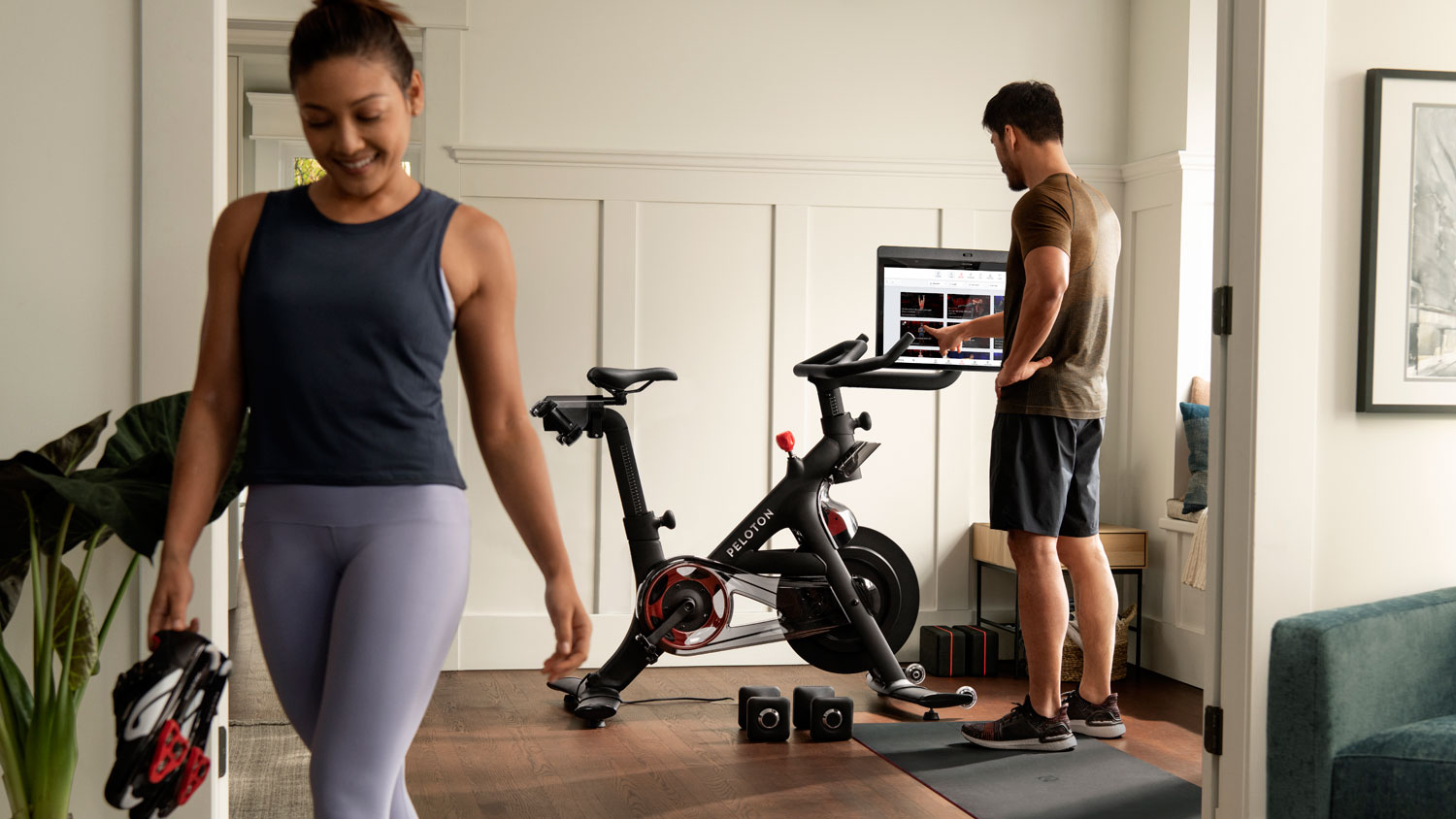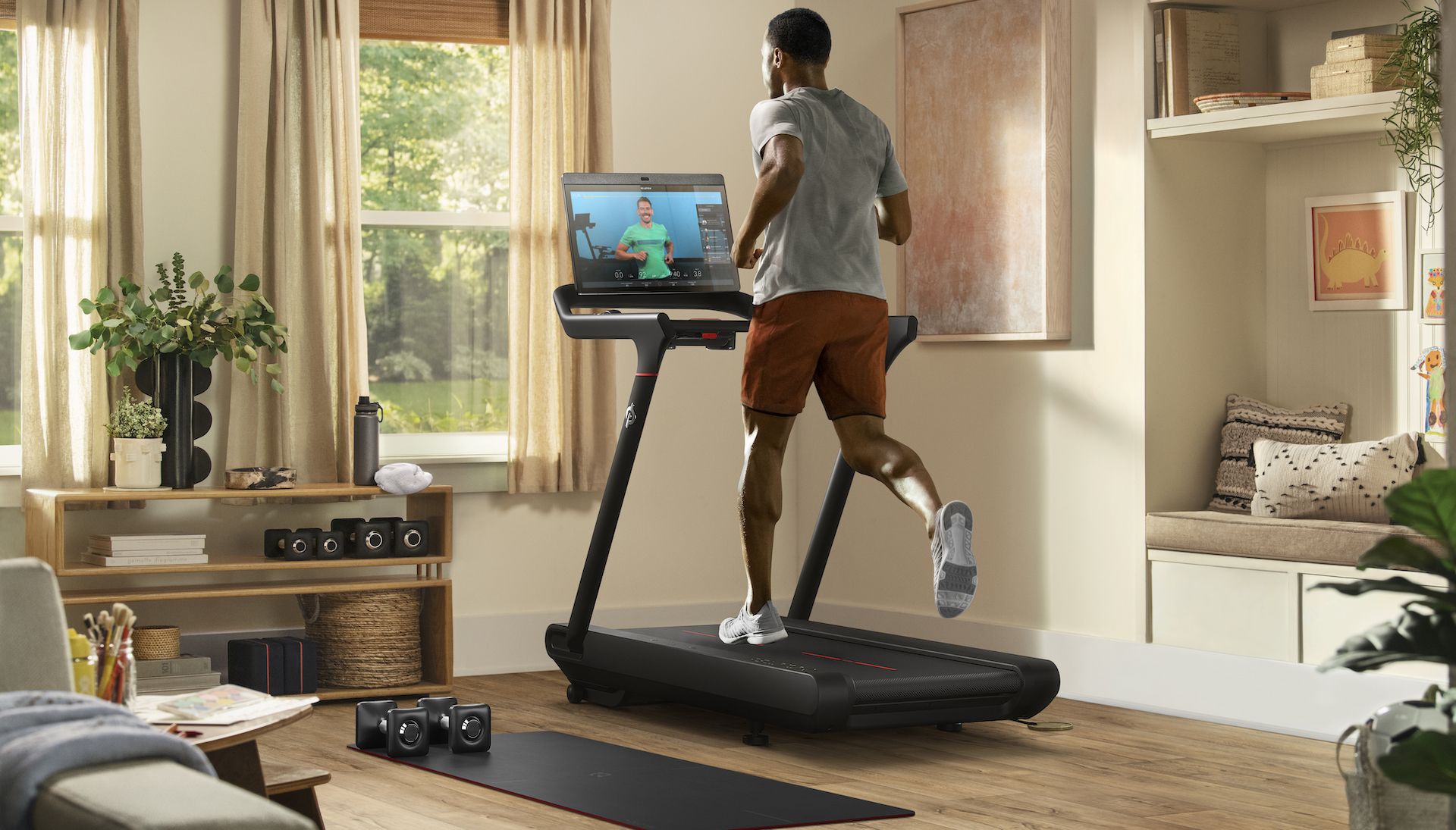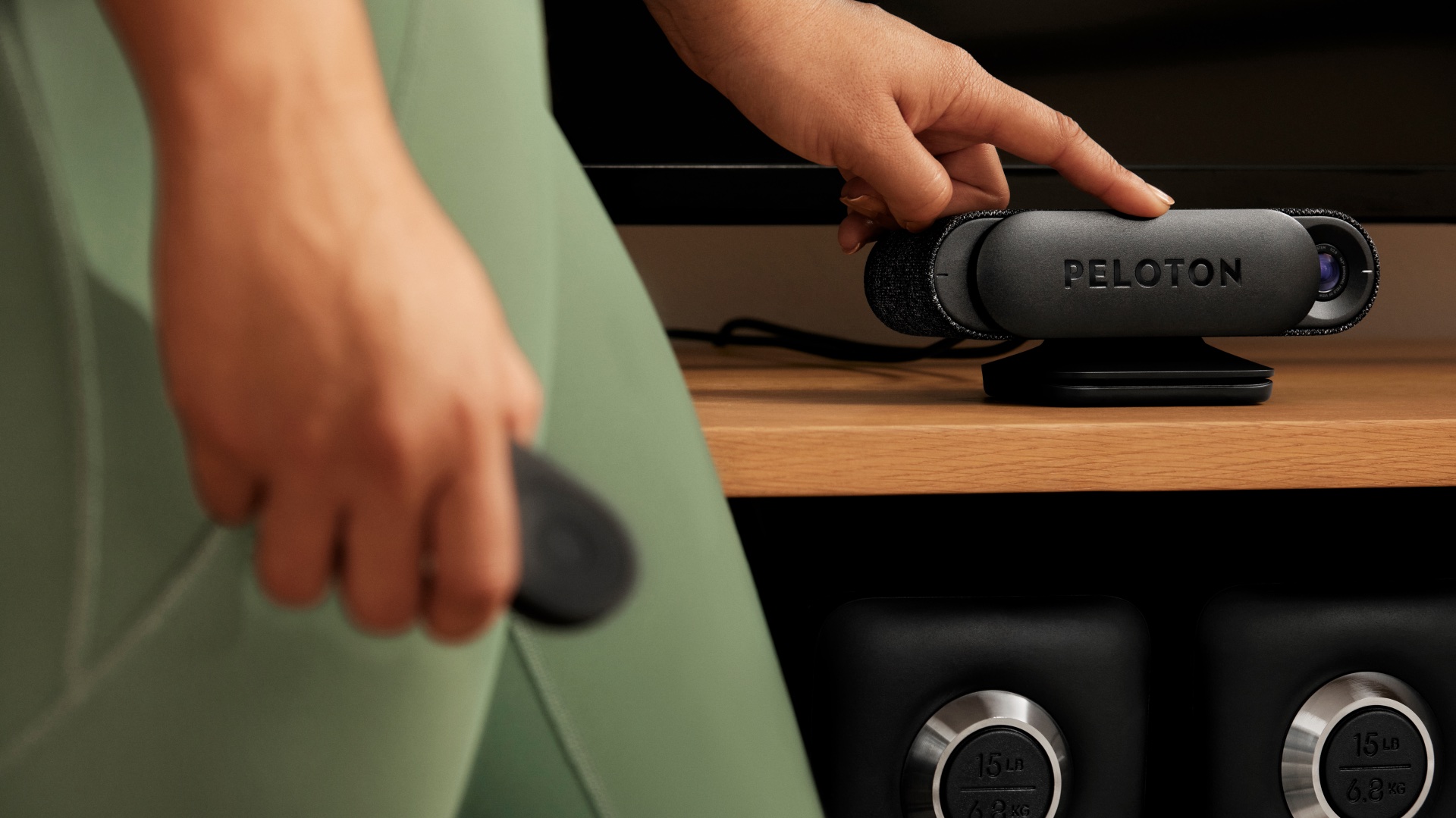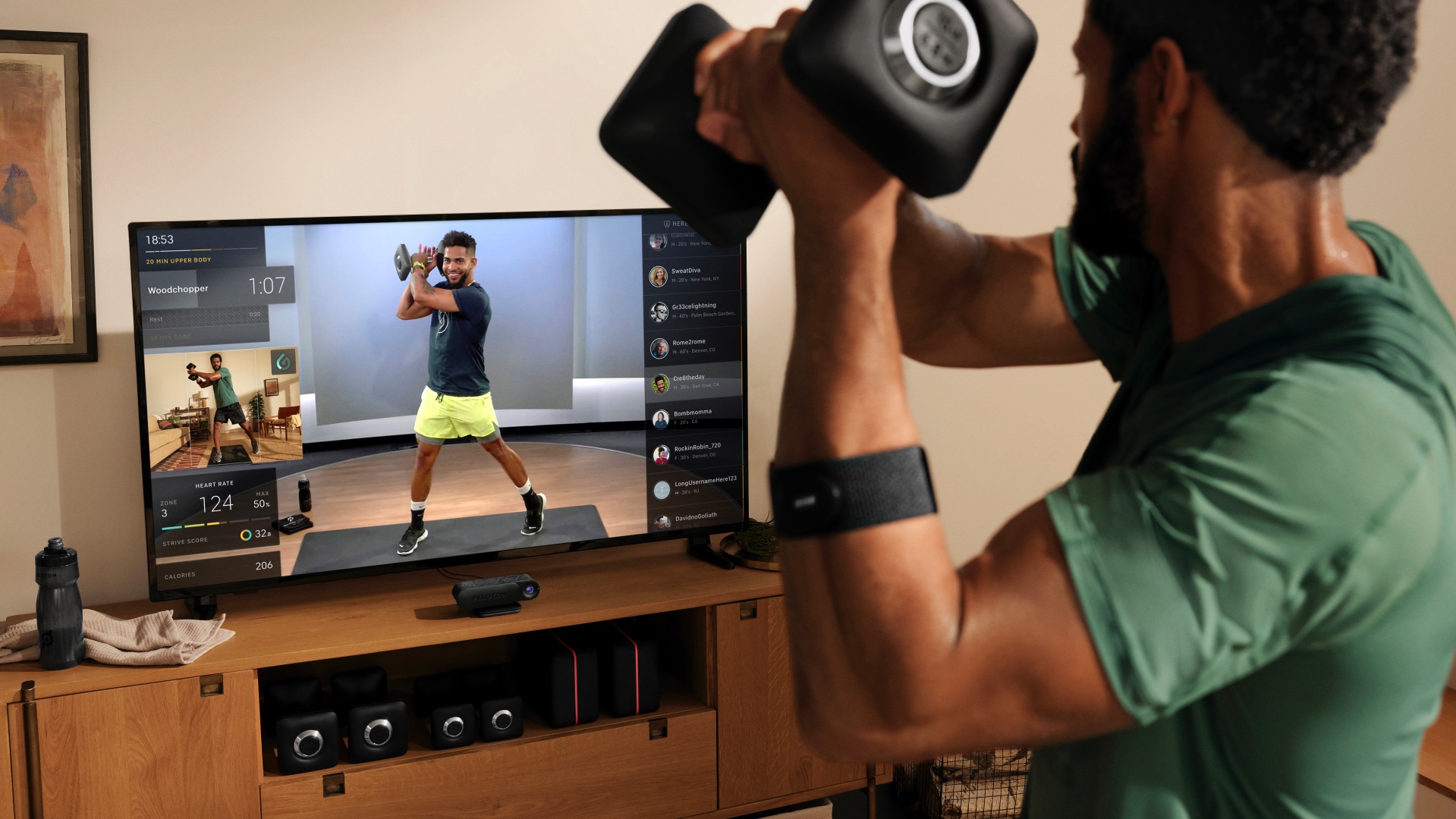Is Peloton worth it?
We look at costs, features, benefits and drawbacks of the broader Peloton ecosystem to determine: is Peloton worth it?


Peloton went from being the de-facto ruler of connected home workouts during the lockdown to where the brand is now, which makes people question whether it's worth buying into the Peloton ecosystem and if so, which product should you choose?
Even now, Peloton is one of the most popular home fitness brands and its products, although not in the highest demand, are still considered high quality and enjoyed by millions of Peloton Members. Peloton offers two different types of products: exercise bikes and treadmills.
Admittedly, the Peloton Bike+ is the most coveted of the lot; this indoor bike has a massive touchscreen display and buttery-smooth controls for an immersive workout experience. The Peloton Tread treadmill offers a similar indoor workout experience but for runners.
As a new addition, Peloton now also caters for lovers of strength training via Peloton Guide, a smart camera system that monitors your movement as you exercise. The Guide is also Peloton's most accessible product to date.
There is also the Peloton App which has a monthly fee but really is the heart of Peloton's offering. You can access thousands of on-demand workouts and attend classes in real-time – a feature that really gets people hooked on Peloton.
Which is the best option and how much do you have to pay for each? Let's explore.
[For the latest prices, visit Peloton US / Peloton UK / Peloton AU. The prices below were correct at the time of writing.]
Get all the latest news, reviews, deals and buying guides on gorgeous tech, home and active products from the T3 experts

How much does Peloton bike cost?
If you're after the classic Peloton workout experience, you'll need a Peloton bike. There are two options: the standard Peloton Bike and the premium Peloton Bike+. Both have large displays and a small footprint but the Bike+ also has a resistance knob which automatically changes your resistance to match instructors' cues.
Thanks to recent changes in pricing, you can own the standard Peloton Bike for less: prices currently start at $1,195 / £1,350 / AU$2,145, which has been discounted in the last few months. The Peloton Bike and Peloton Bike Plus both have three extra packages, where you can add accessories or family members to the package.
The Peloton Bike Plus is different from the classic bike as it has a larger screen, updated WiFi and Bluetooth capabilities, and a more streamlined look. The Peloton Plus also has four packages, similar to the classic bike, starting at $1,995 / £1,845 / AU$2,995 for the basic bike.
Both bikes are much cheaper than how they used to be and we doubt they'll get much cheaper – we could be wrong, though, as prices kept on lowering in recent months – so now is a good time to invest in a Peloton Bike.

How much does a Peloton treadmill cost?
Much like the Bike, the Peloton Tread has four different packages, depending on your budget and requirements – especially if you want to include their bundles of accessories when you buy the Tread.
Tread prices start from $2,345 / £2,445 (it's currently unavailable in Australia). This includes free delivery and set up of the Tread in your home. The Peloton Tread's price hasn't decreased much since the launch and is still rather expensive, as you can tell.
The Peloton Tread is harder to recommend than the Bike as there is only so much you can do on it. Sure, there are many Tread workouts available in the Peloton App you can use the screen to stream other types of workouts, not just treadmill ones, but still; there are cheaper treadmills available with similar functionality and even rotating screens that might be a better option.

How much does the Peloton Guide cost?
The Peloton Guide is an exciting product – no wonder it won the Fitness Design Icon category at the latest at the T3 Awards 2022. Better still, there are already plenty of dedicated Guide workouts available in the Peloton App with more coming out continuously.
As mentioned above, the Guide is Peloton's most accessible product from a price point of view: the camera-only package is only $295 / £275 / AU$445. In the UK and AU, there is only one more package that includes a few weights and a mat for $545 / £495 / AU$795. In the US, there is a third package that includes six sets of Rouge dumbbells and the Peloton Heart Rate Monitor.
One way to save money on Peloton Guide is to only get the camera and get your own dumbbells and yoga mat. Especially dumbbells can be bought second hand which helps keep the price down. Thanks to people giving up on their lockdown gyms, you can find many cheap dumbbells online.
Alternatively, you can buy a pair of adjustable dumbbells; these will replace those six sets of Rouge dumbbells easily and take up less space.

How about the Peloton App?
The Peloton App provides the interactive part of the workout, with motivating instructors that take you through Bike, Tread or Guide workouts, pushing you to get to the next level of your fitness. Once you're connected to the app, your workouts will stream on to your devices screen.
The app can also be used on its own to perform multiple workouts such as yoga, strength and outdoor running. A membership to the app gives your whole family access, with live and on-demand classes and leaderboards when you're working out.
The cost of the Peloton app varies, depending on whether you have a Peloton Bike or Tread or whether you are using it without one of their devices. If you're just using the app on its own, it can cost as little as $12.99 / £12.99 / AU$16.99 a month. New members get a 30-day free trial to try out the app. After this free trial, the cost of the Peloton app goes up to $39 / £39 / AU$59.
Getting the Peloton app on its own might be the cheapest way to get access to the Peloton experience, especially if you're after that sweet cycling experience as there are plenty of excellent Peloton alternative bikes out there. You might need a smart TV – most of the cheaper alternatives don't come with displays – but in this day and age, it's likely you have at least one smart TV in the house.

So, is Peloton worth it?
Is Peloton worth it? If you're into cycling or strength workouts and want to enjoy studio-style workouts at home, the answer is that Peloton is indeed worth it. Peloton is likely to stay the provider of premium workout equipment and workouts, so if that's what you're after, now is a good jumping-in point into the weirdly wonderful world of Peloton.
One concern people might have is Peloton going bust; especially due to news circulating online in recent times. And although we can't guarantee it'll never happen, it's likely that even in that case, you'll still be able to access the on-demand workouts for years to come as storing those will require fewer resources than manufacturing/selling bikes/treadmills/etc.
We can envision Peloton becoming a service provider, a sort of Netflix for workouts, where for a fixed monthly price, you'll get access to new workout content that can be streamed on different devices. To some degree, the Peloton app does this already, and, as mentioned above, you can use cheaper bikes and stream Peloton workouts already.
Another possible future for the brand is that it'll be bought by a bigger brand such as Apple. In this scenario, the service will go uninterrupted to 'old' users, so it shouldn't be a concern. Integrating Peloton into a broader ecosystem such as Apple's, users would also benefit from other devices being connected to Peloton products even more seamlessly.
What the future holds for Peloton we don't know; what we know is if you like Peloton-style workouts, there are many different ways to enjoy them, even now.

Matt Kollat is a journalist and content creator who works for T3.com and its magazine counterpart as an Active Editor. His areas of expertise include wearables, drones, fitness equipment, nutrition and outdoor gear. He joined T3 in 2019. His byline appears in several publications, including Techradar and Fit&Well, and more. Matt also collaborated with other content creators (e.g. Garage Gym Reviews) and judged many awards, such as the European Specialist Sports Nutrition Alliance's ESSNawards. When he isn't working out, running or cycling, you'll find him roaming the countryside and trying out new podcasting and content creation equipment.